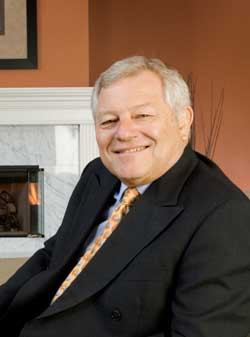Building the Pipeline
When you have a limited number of markets, you must have a diversity of product types to gain mass–and Essex does this. Its portfolio, which includes 126 apartment properties and 27,000 units, ranges from new construction to B- and C-level acquisitions. You’ll find the small 60-unit Marbella in Los Angeles and the large 637-unit Enclave in San Jose, Calif. You’ll see the three-level Fairwood Pond in Renton, Wash., and the two 19-story Bunker Hill Towers in Los Angeles. Overall, the average age of an Essex property is approximately 20 years, and the average class is B (but in A locations). The REIT tends to hold most of these properties, unless it gets a great offer and makes an opportunistic sale.
Essex has traditionally grown its portfolio by acquisition rather than development, but that’s changing. “The last few years, with for-sale builders being aggressive in building up land prices, we weren’t able to make the economics of development work in many places,” says Essex CFO Michael Dance.
In general, Essex will target a development premium of 100 basis points (or 1 percentage point) over what it would fetch for an acquisition, it will build. If not, it will buy. To acquire properties, the company has an active group of five people on the ground in its three major markets under Craig Zimmerman, the executive vice president of operations. Their target: properties that haven’t hit the market yet.
Essex’s buyers go in markets armed with information like market rents, utility costs, and what kind of upgrades a property will need to fetch higher rents. The REIT’s upgrades can range from painting, landscaping, and new appliances to installing marble countertops and making architectural changes. The company knows what it’s doing: In 2005, Essex generated an approximately 12 percent return on invested capital in redevelopments. It also targets a 10 percent to 12 percent on new projects.
Typically, Essex spends about $10,000 per unit on an interior renovation, but it will go higher if the research justifies it. Landscaping and exterior improvements can vary. The firm spent $6.1 million to redevelop Kings Road, a 196-unit property in Los Angeles that it acquired in 1997. Before the renovation, the 35-year-old property earned an average rent of $1,262. Afterward, it pulled in an average rent of $1,686. Finding a Kings Road is harder now than it was in 1997, though. “Redevelopment has become more and more popular among investors,” Zimmerman says. “There’s almost an imbalance between buyers and sellers on properties you want to redevelop.”
With so many buyers at the table, Essex has decided to build its portfolio through development. As of June 2006, the company had a $670 million development pipeline, but there’s some skepticism among analysts about its development capabilities. It has another $120 million in development in its second fund. “They have not been nearly as active in development as some of their more highly touted peers,” Leupold says.
But the company may have a slight advantage when using its local connections to secure land and move through the entitlement process. “We won bids where we were the third- and fourth-priced,” says John Eudy, executive vice president of development for the company. “Having credibility for what you’ve done in the past and if you know the city or not is a big advantage.”
Some may scoff at Essex just being a California or West Coast company, but the REIT has found success through its geographic focus and reliance on research. It’s a strategy the company first honed under Marcus and Millichap and one that it promises to continue into the future.
